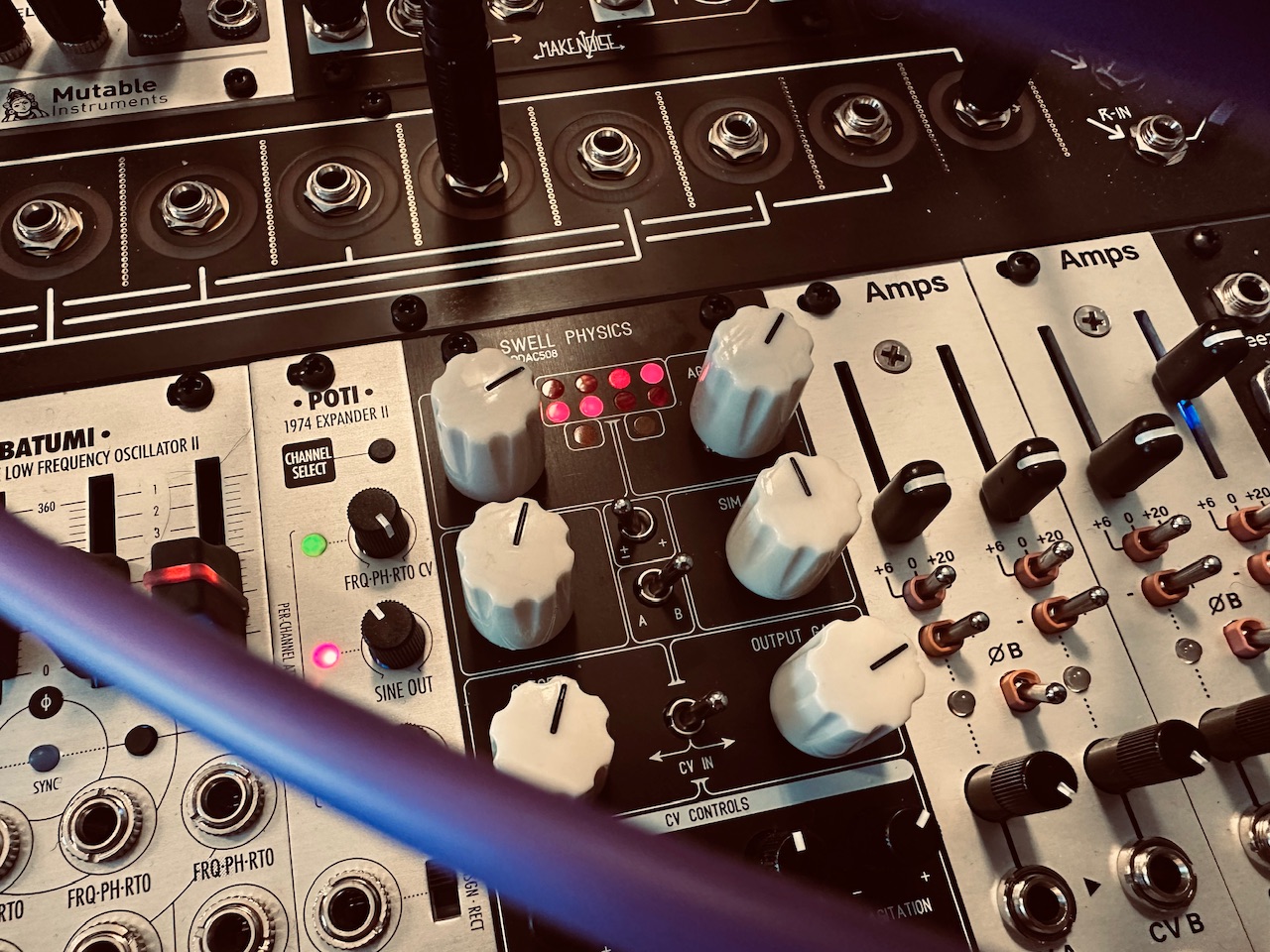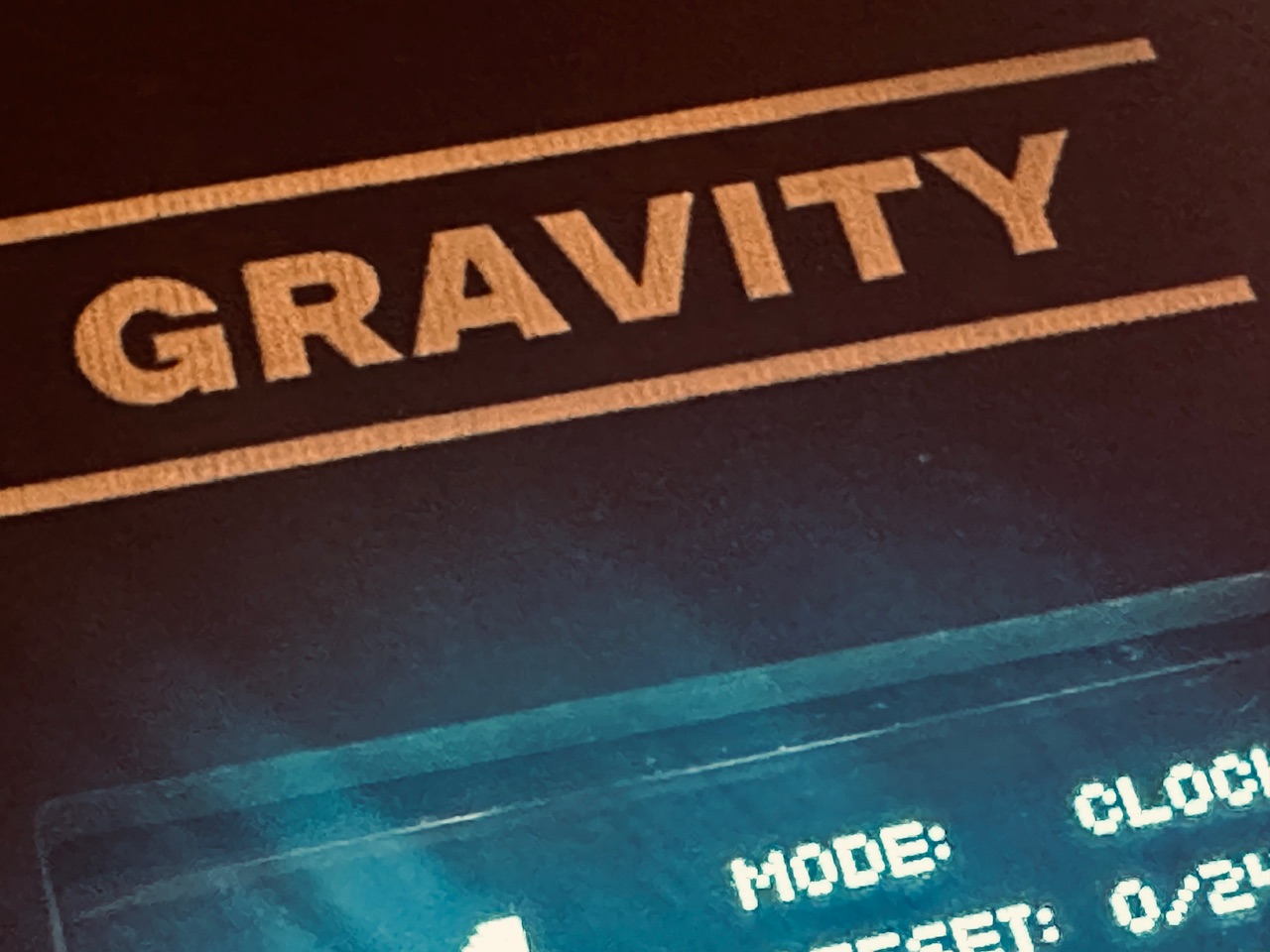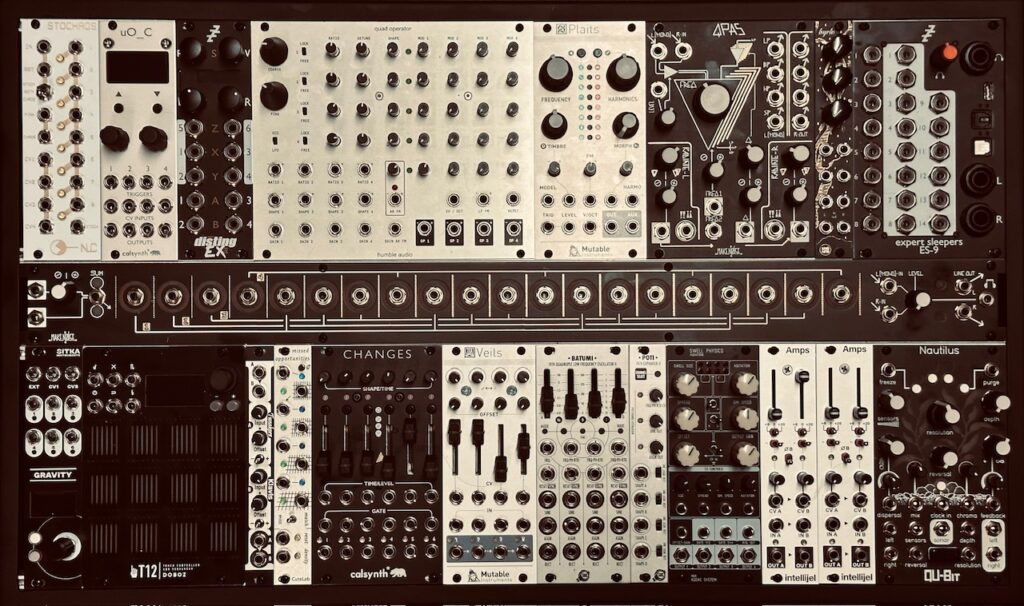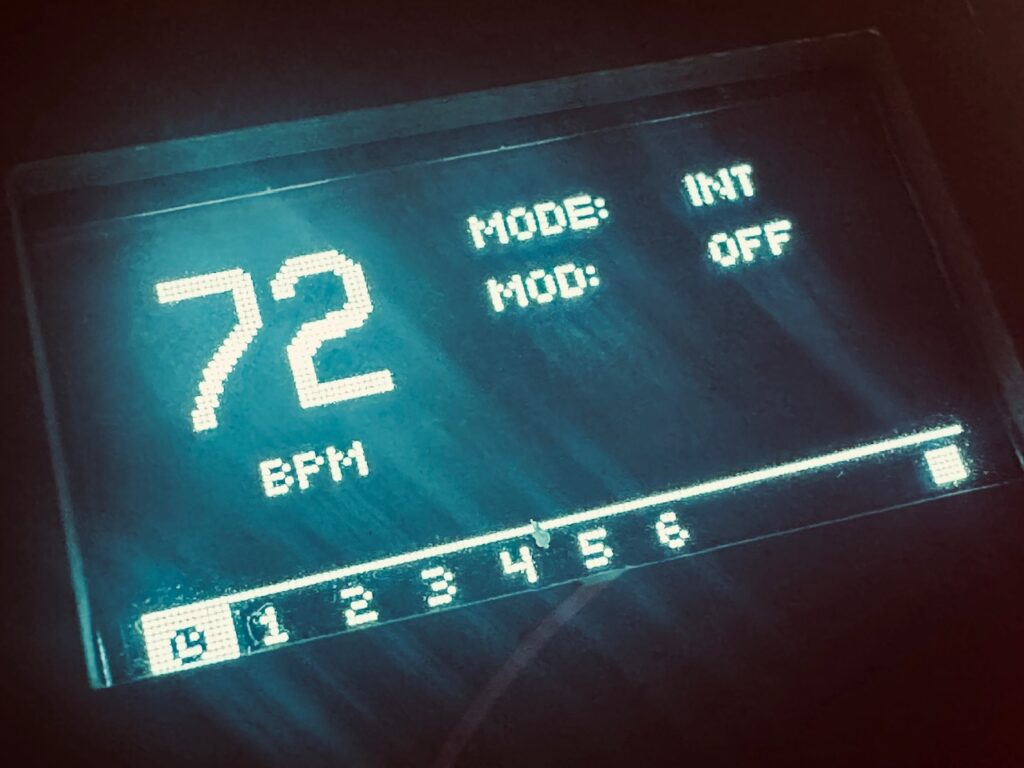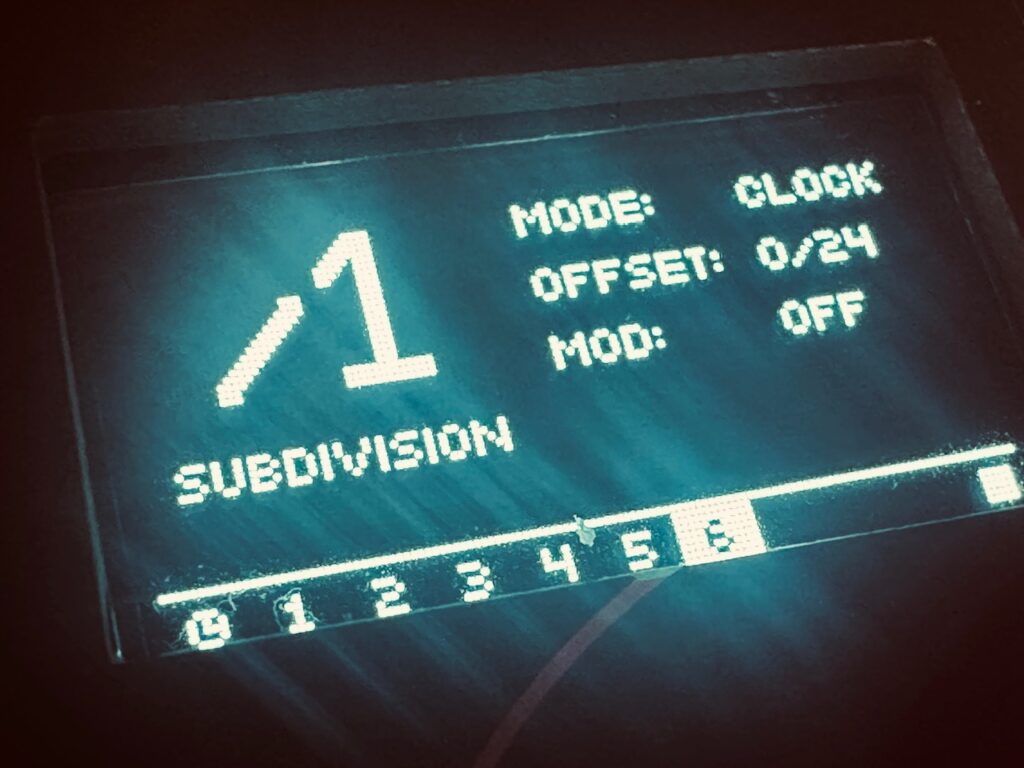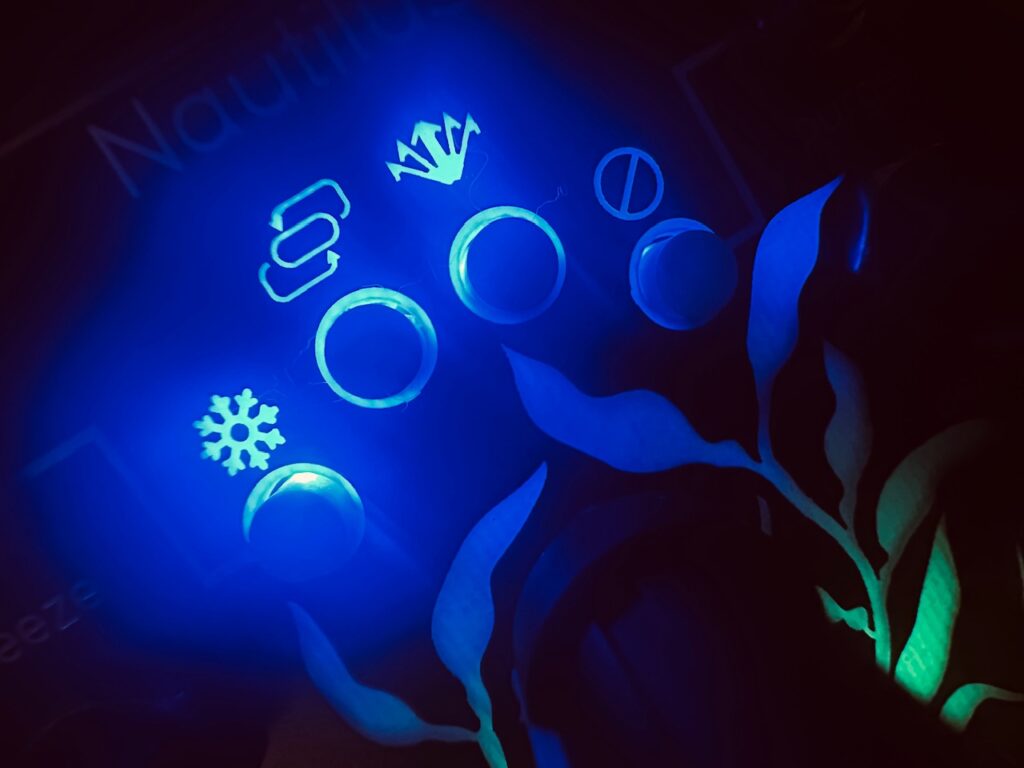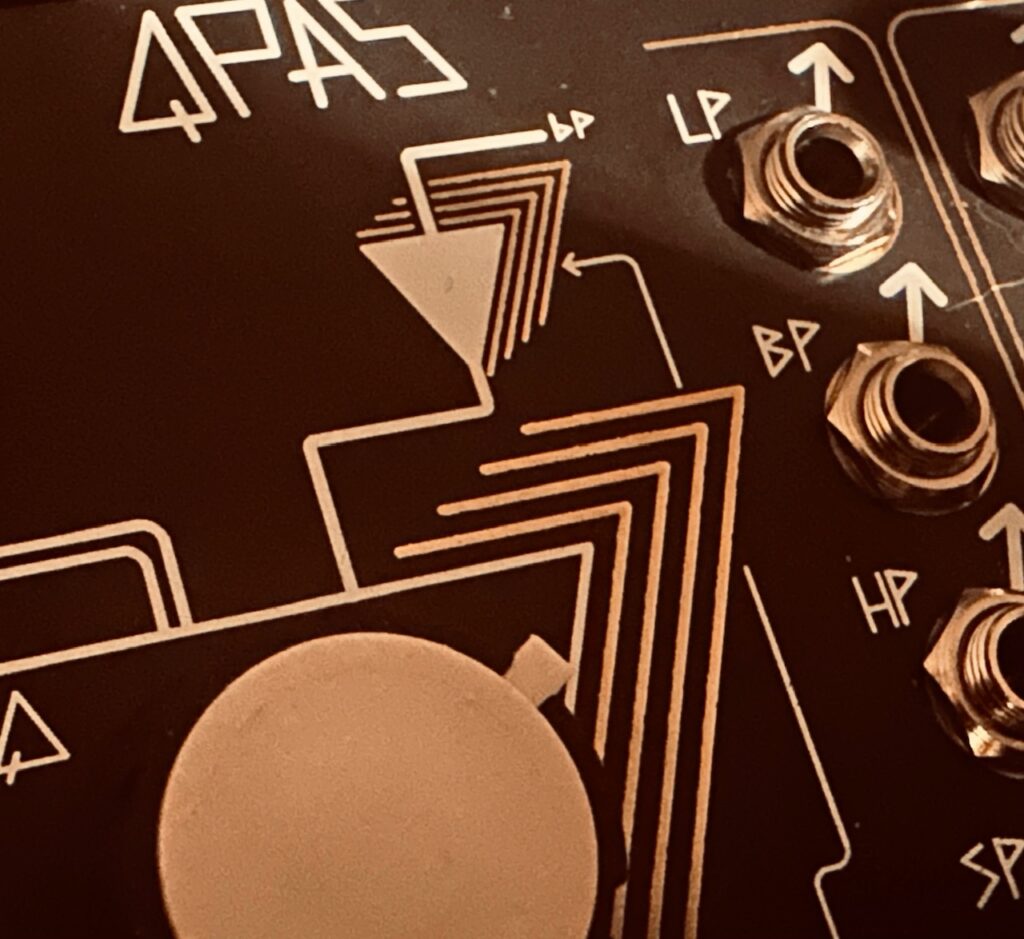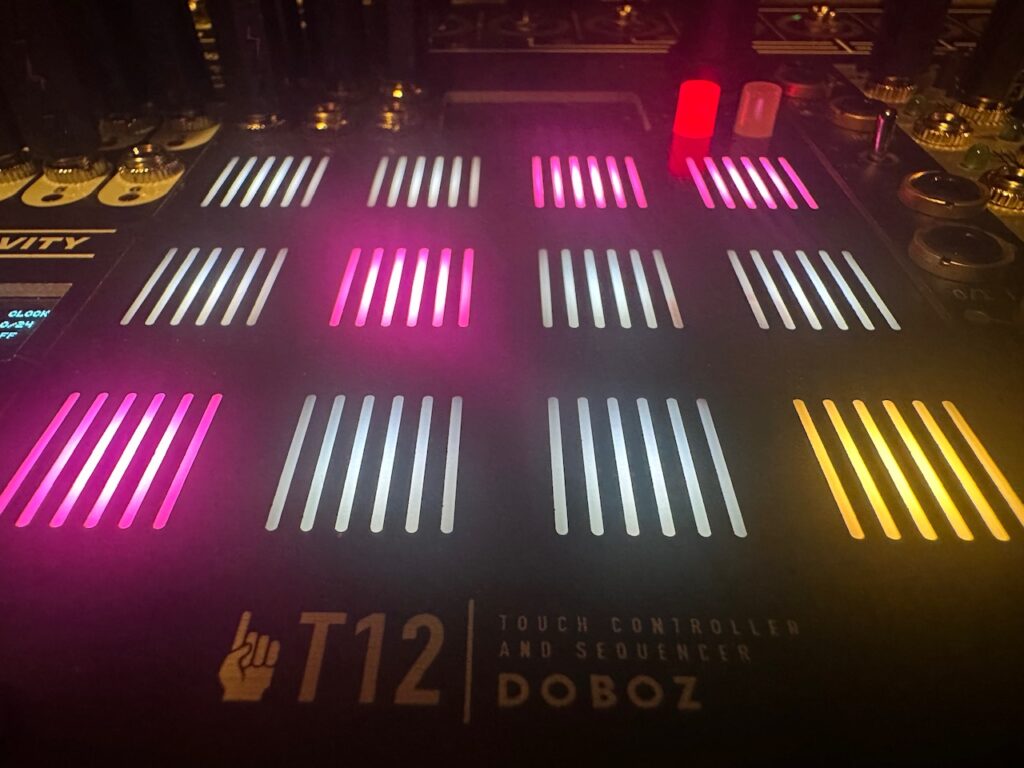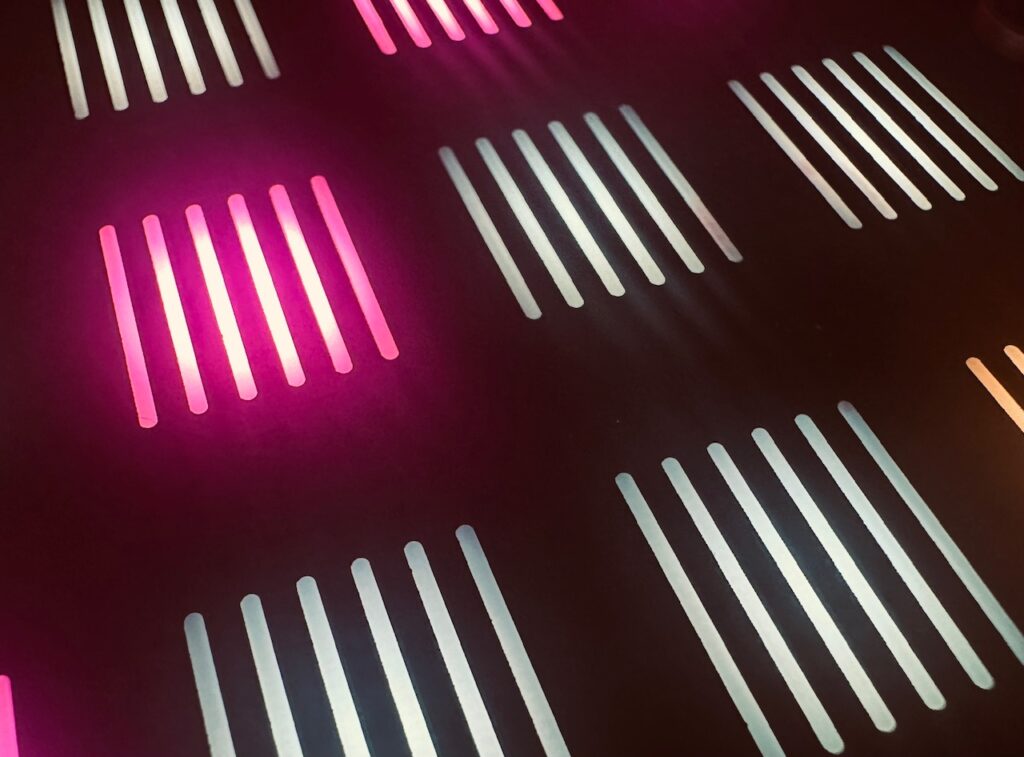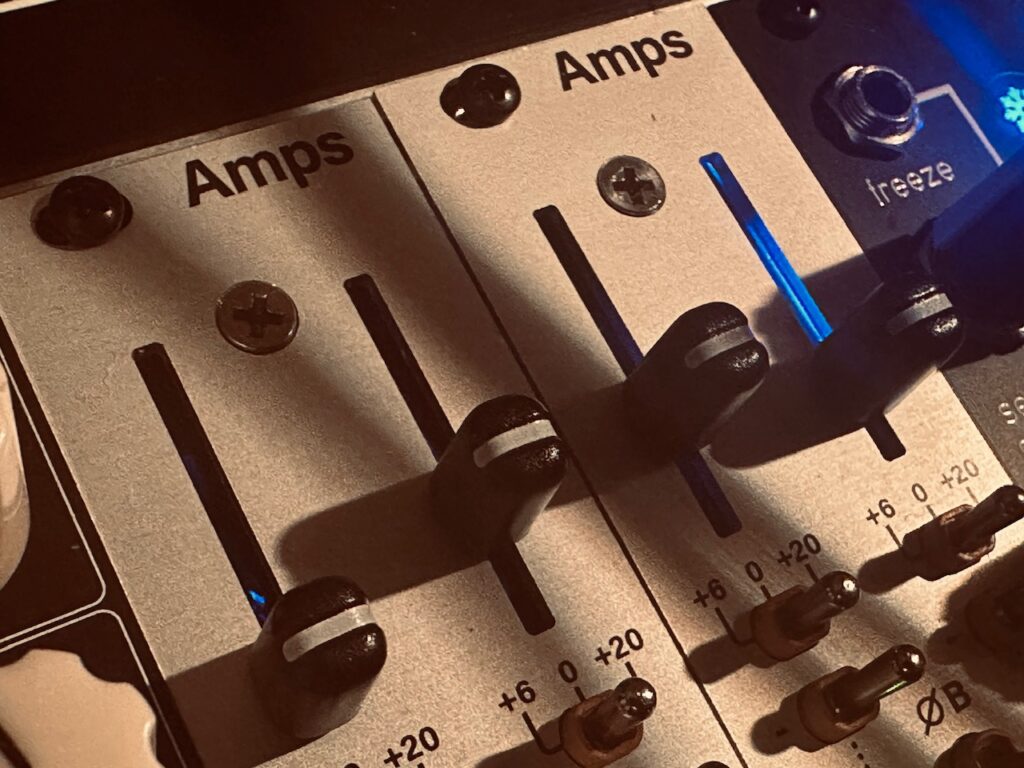The first night at sea was as eery as I can remember seeing on the water. Like a scene from a dreamworld that was real, but didn’t always seem like it. Like we were traveling between realms. I won’t claim to be some long travelled seafarer, but, having grown up by the ocean, I’ve spent a good amount of time on the water in my life. I’ve been in ocean faring boats on three continents and three oceans from the tropics to the arctic. But one thing I’ve never experienced while on the water is The Marine Layer. I’ve seen fog, even bad fog, but nothing could really prepare me for the enveloping marine layer clouds. It was the kind of dense cloud soup that, in another age, might have been the demise of a ship unable to see any navigation markers whether on the land, sea, or in the sky. The only thing visible in the gloom was the sparkling refraction of the ship’s fog lamps, and the sea rolling off the hull as we slowly made our way through Puget Sound and out to sea. The ship’s fog horns blasting every few minutes, and gentle splashing against the hull 80 or so feet below us, the only things to be heard. The entire experience left a lasting impression.
I spent much of that night and parts of day two scouting the ship for someplace that would be a good spot to whip open a modular synth case later at night. I wanted to be as out of the way as I could, but still in a spot that has adequate electricity to power the synth and a small USB hub connected to my iPad, the Michigan Synth Works XVI, and a small 4-channel headphone amp I bought in a lieu of a passive TRS splitter for using with more than 1 person (I loathe not having individual volume control).. Although I ultimately found a couple of good candidate spots, but this first recording I made during some morning downtime in my cabin before arrival at our first port of call. I wanted to give a full test run of the equipment in my room before lugging it down nine decks, the full width of the ship, and nearly its entire length. The setup is not terribly complicated, but it can be fussy, and I didn’t want to waste time futzing with gear in a communal space.
For this first run of the full use of this synth with all of its accompanying support gear, I wanted to use a familiar patch so as not to become overstimulated if I were to encounter problems with my other gear. I spent the better part of two weeks pouring over a patch with the Addac Systems Addac508 Swell Physics and RYK Algo that I quite enjoyed making, and so decided to go with that same approach using the Humble Audio Quad Operator. The four Swell Physics wave outputs to the four operator VCAs (Gain 1-4) to slowly bring their individual voices in and out with the flow of the ocean. This goes straight to the mixer, operators one and three panned left, with operators two and four panned right, where it’s then sent to a reverb bus using the beautiful Blue Mangoo Stratosphere Cloud Reverb.
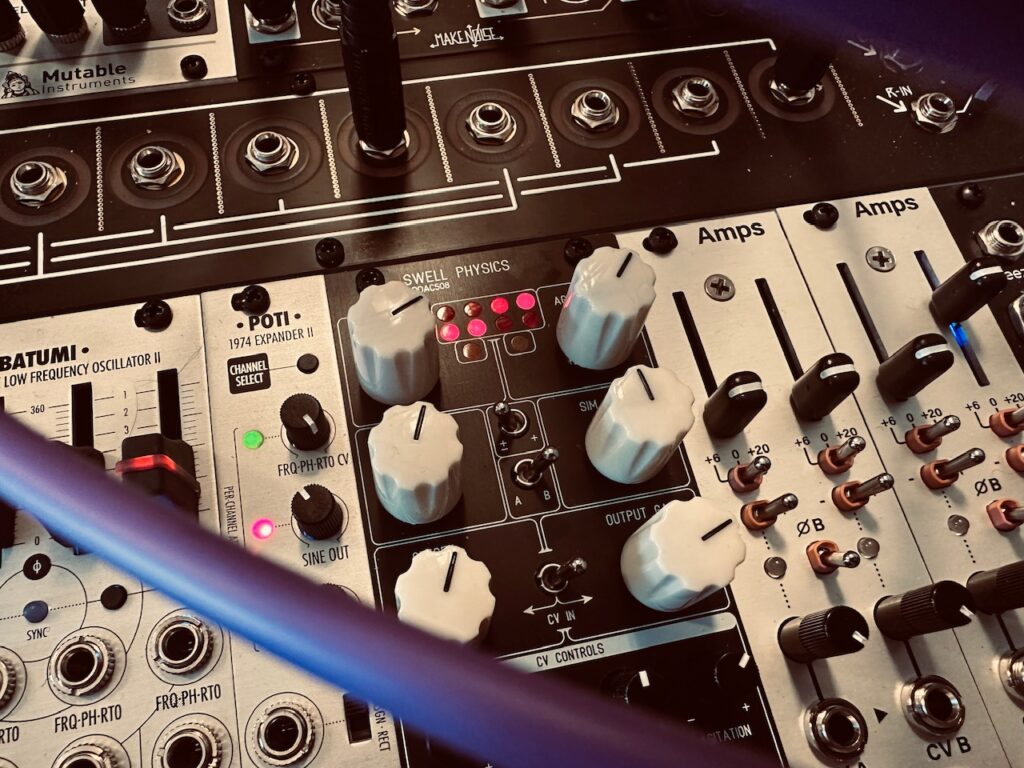
Three of the Swell Physics outputs also provided the source for pitch CV used in the second voice. In another bid to patch something familiar, I once again used chaotically generated gates with the NLC Stochaos, alongside Disting Ex’s SD Multisample algorithm, this time using LABS Music Box samples. As in my test patch at home, I again used a tempo modulated Sitka Gravity to have the clock float above and below the base tempo of 72bpm. If I were just a bit smarter, I would have thought to use one of the four wave outputs from Swell Physics rather than a random LFO from Batumi II.
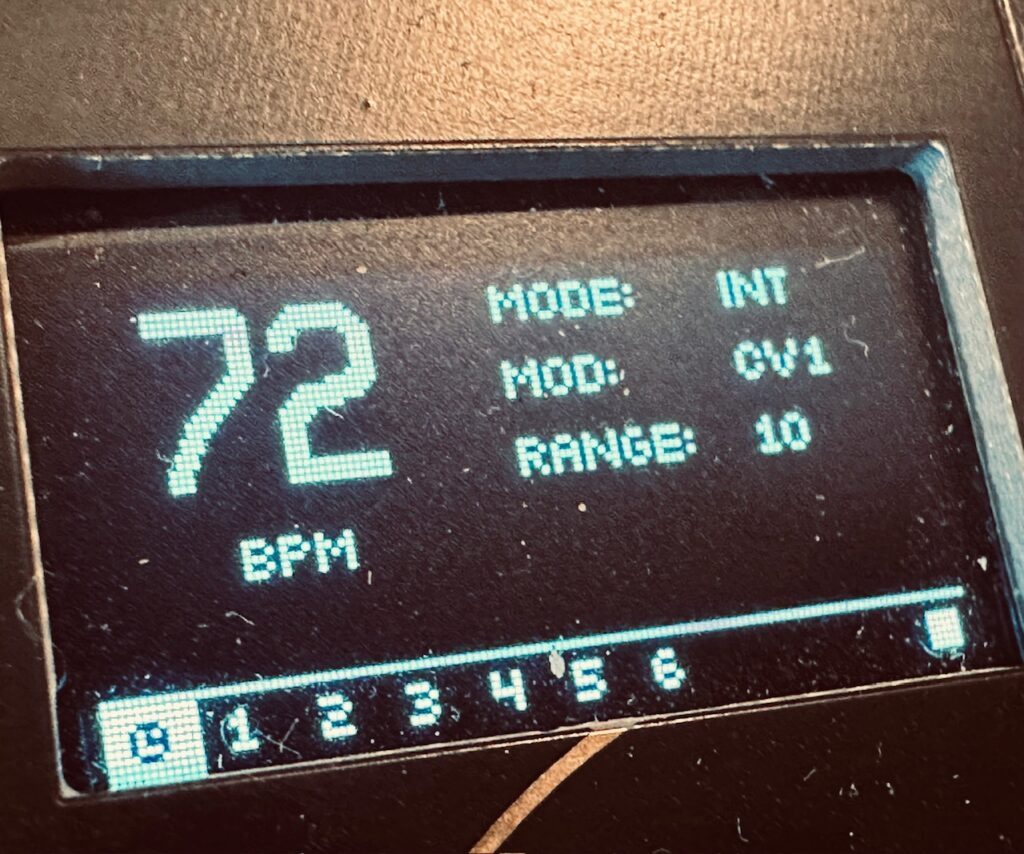
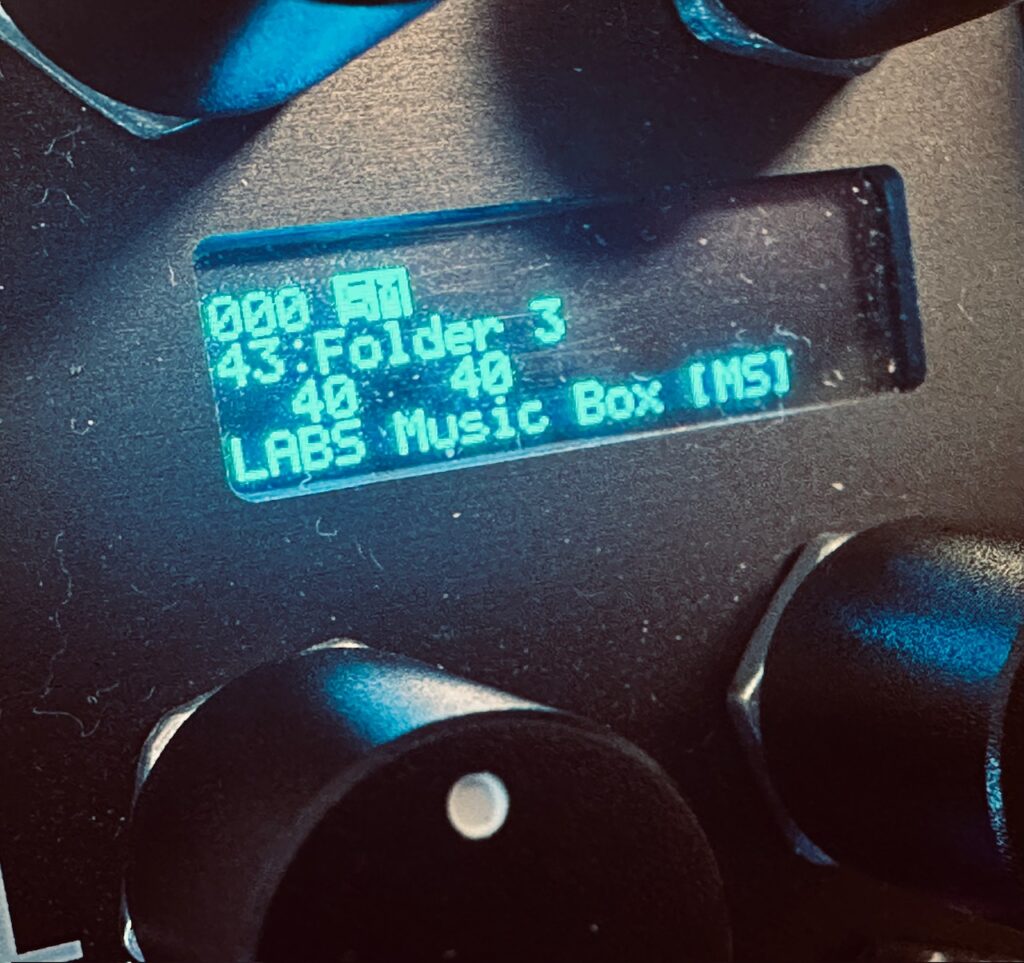
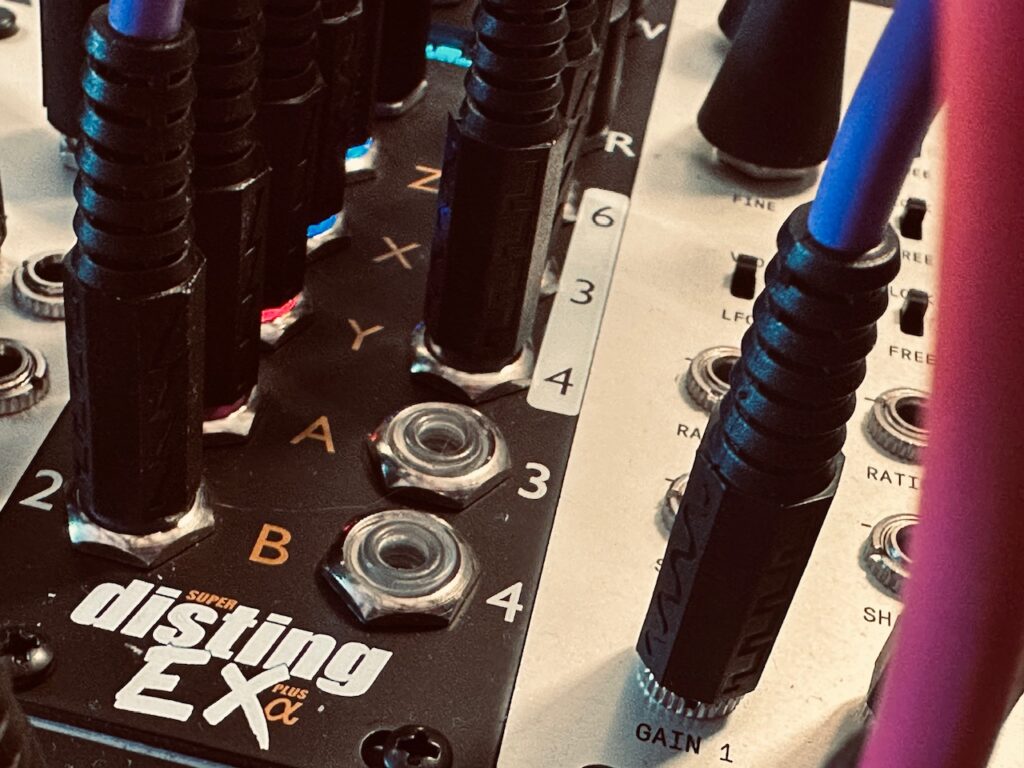
The Toy Piano samples output to the Qu-Bit Electronix Nautilus for some delay and with gradually introduced bit crushing in the feedback path. The delay is set fairly slow, with light modulation to Reversal, Feedback, and Dispersal. In a roughly 50/50 dry/wet mix, the Nautilus outputs go straight to the mixer, and are sent to the reverb bus.
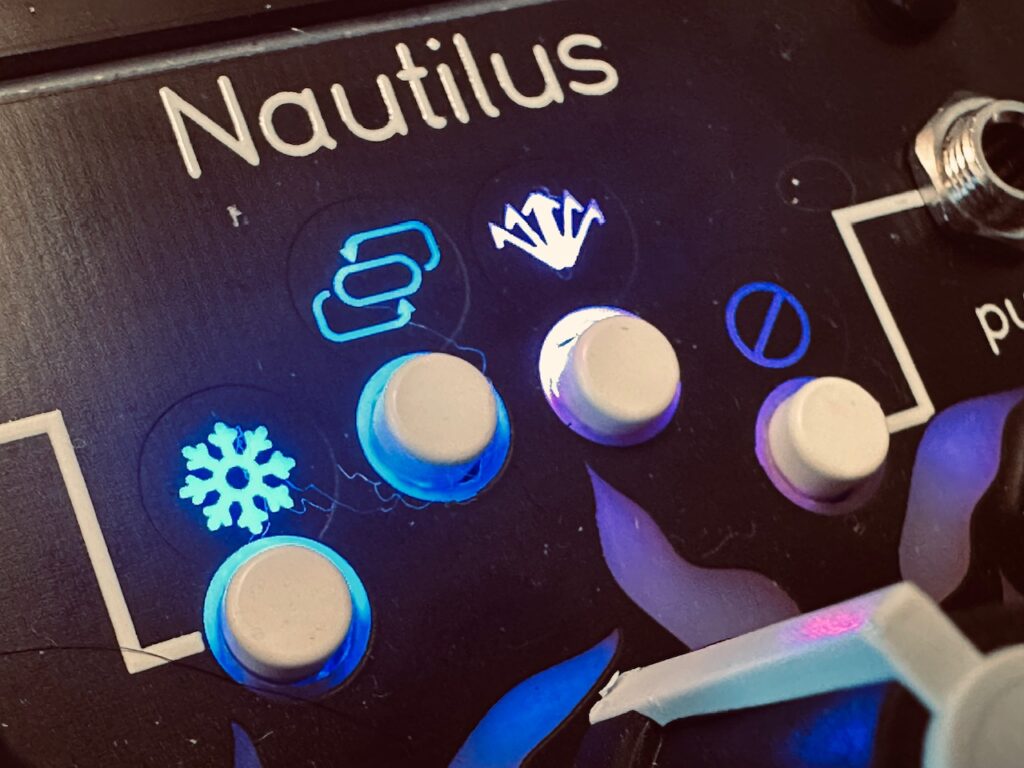
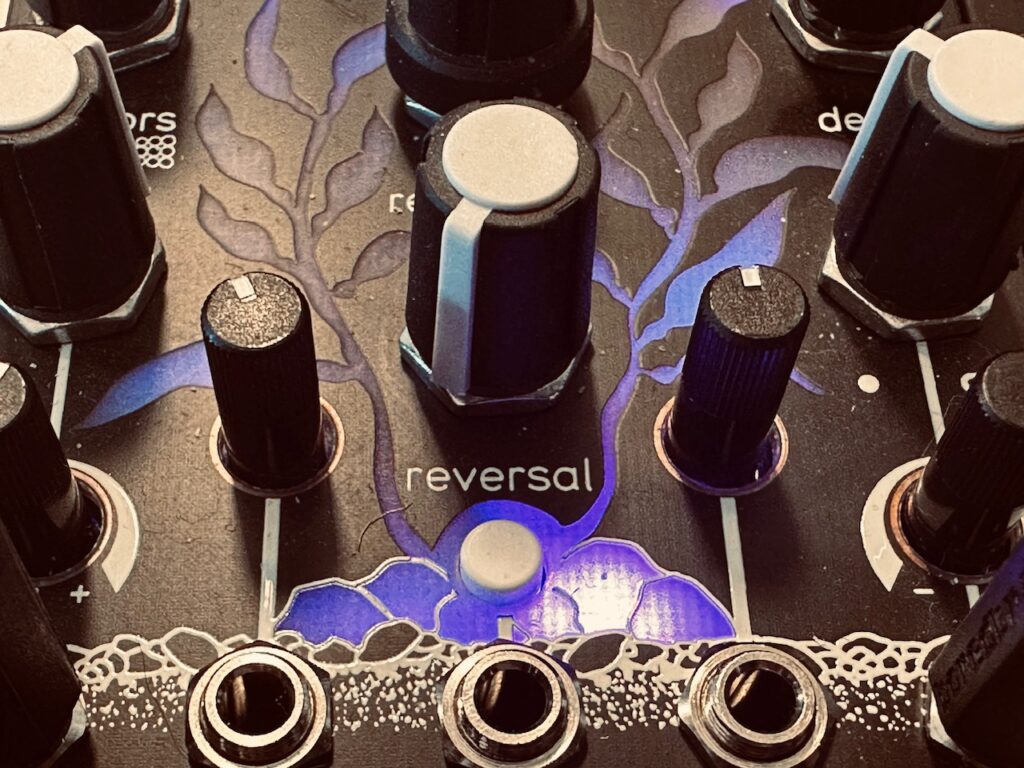
The last portion of the modular is an approximation of the ship’s blaring foghorn. I’m using Plaits in (I think) FM Synthesis mode, using the Doboz T12 touch controller to manually play the note. It’s only used three or four times through the ~7 minute recording.
This patch is the first I can recall making where I’ve used post-production processing rather than playing everything live. This synth is limited, and so is time to create patches. Before I left on the trip I knew that my synth was without one of my staples: a granular processor. Earlier revisions of the case had a Mutable Instruments Beads, but it was eventually lost in favor of something else I can’t remember. I do know that I while I was building the synth I was insistent on several modules having a spot. The Addac Swell Physics, Qu-Bit Nautilus,1 Doboz T12 + 3hp module of choice (I chose the Klavis Tweakers), Expert Sleepers Disting Ex, uO_C, CalSynth Changes (MI Stages), Sitka Gravity, and the Humble Audio Quad Operator were non-negotiable for me, despite a couple of them being large for a case this size. But Beads didn’t make the cut because I found an excellent granular processing plugin for iPad, Fluss, by Hainbach and Bram Bos. It can function as a granular instrument, granular sampler to record and process longer samples, or a live granular processor with a 6 second buffer. Because it’s the behavior that most closely resembles Beads, I’ve only used it in live mode, and I can say that I really like it. Because it’s a live processor Fluss is a good substitute for Beads, and despite being a plugin, it leverages the iPad touch environment well, being a very hands-on, playful interface. Sliders and discs can be flicked around, the effect frozen, manipulation of the three voices, and more are all easily accomplished with touch gestures. Fluss also speaks fluent midi, and can be used with hardware controllers should you want even more manual control.
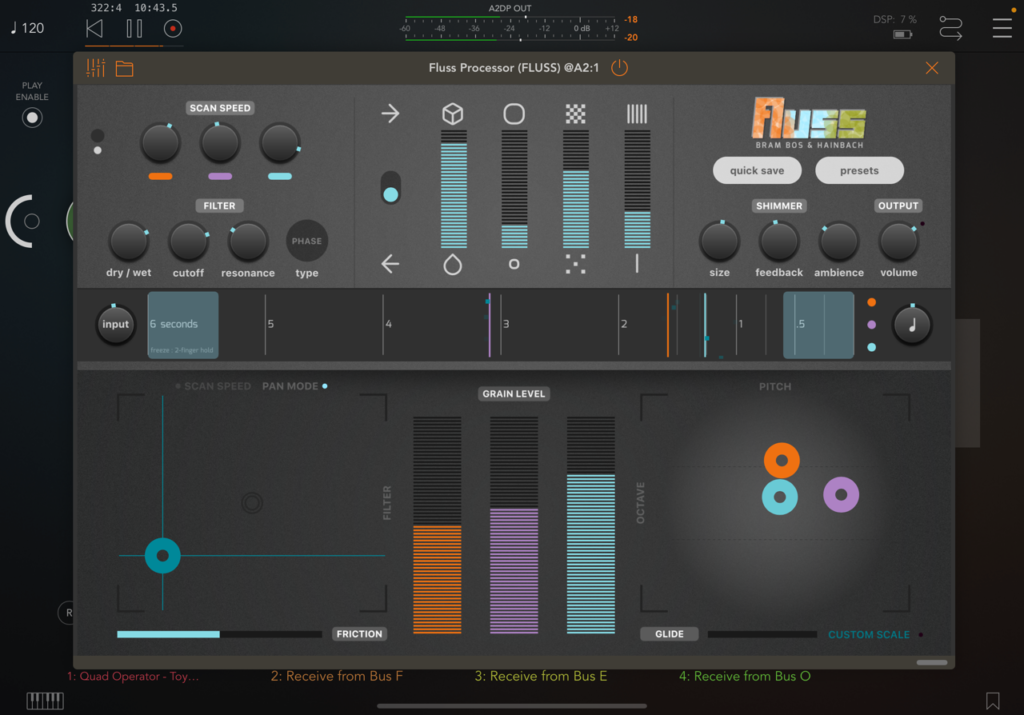
After recording the modular, I played the recorded file in AUM through an effect bus with Fluss as the plugin, with yet another send from the Fluss output to the Blue Mangoo Stratosphere Cloud Reverb. I mixed the original recording with the granular processing and reverb, and recorded that mix, which is what we have here.
I’ve been using AUM as a final mixer for quite a while with my modular. The way my main synth is set up now, I can’t even listen to it without plugging it into my iPad with AUM. An Expert Sleepers ES-9 is my only output module in that synth. Until recently I’d basically been using it as a very basic mixer. Most of the time it would be a simple stereo input mixed in the synth, primarily via the AI Synthesis 018 Stereo Matrix Mixer, while using one send/return bus to go out to a reverb pedal before final mixing. But as I prepared for this trip, knowing I’d need to use plugins in ways I generally don’t, I started making more intricate mixes, utilizing various sends from several input channels to effects plugins and the output bus. Although I haven’t (yet) recorded multitracks on this trip, AUM is certainly set up to easily to do so. Since I haven’t done much post-processing, I haven’t felt the need to, though that may change as I learn to better leverage a mixed hardware-software environment. I’m not terribly interested in moving in the box, but if a plugin has a touch driven interface that’s playable, like Fluss, there’s no good reason to avoid it since I’m already using AUM as my mixer.
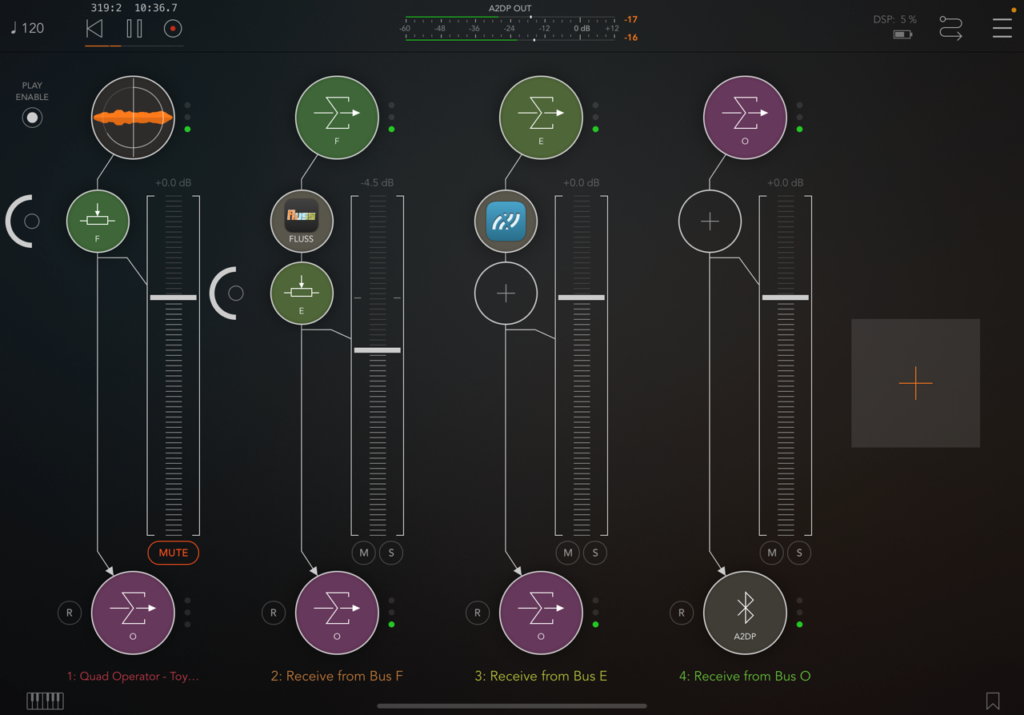
Modules Used:
Addac Systems Addac508 Swell Physics
Humble Audio Quad Operator
Mutable Instruments Plaits
Mutable Instruments Veils
Expert Sleepers Disting Ex (LABS Music Box)
CalSynth uO_C
Nonlinearcircuits Stochaos
Sitka Instruments Gravity
Qu-Bit Electronix Nautilus
Intellijel Amps
Xaoc Devices Batumi II + Poti II
Doboz T12
AUv3 Plugins Used:
Bram Bos / Ruismaker and Hainbach Fluss
Blue Mangoo Stratosphere Cloud Reverb
Modular synth performed and recorded in 1 take in AUM on iPad via the Expert Sleepers ES-9. Granular effects added during post processing in AUM on iPad.
*****
- Yes, both the Swell Physics and Nautilus were chosen specifically for their oceanic themes. An early revision of the case also had the Qu-Bit Aurora, which would fit the destination too, but it was substituted out early on during the revision process for something more practical like VCAs or modulation.

